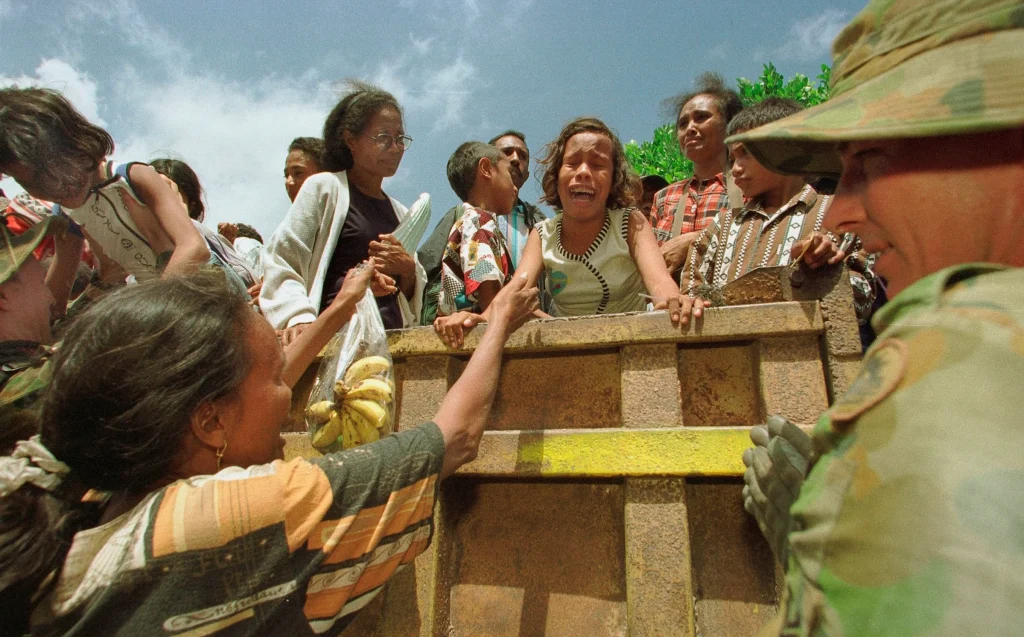Isa was 14-years-old the first time she was raped.
It was March 1976. A few months earlier, Indonesia had invaded the small island nation of East Timor, sending thousands of soldiers into the country in what would become a decades-long massacre.
Isa had watched as uniformed men rolled tanks down the streets of the capital Dili, until one day they stopped in front of her house.
“I was taking a nap when I saw the soldier come and stand by my bedroom. I was terrified because he had a gun,” she told The Telegraph.
The soldier attacked her while her family sat in the next room, unable to stop him or they would be killed.
“He took off my underwear and raped me on my bed. He didn’t even bother to take off my dress,” she said, speaking to The Telegraph at the offices of the Pirilampu ‘Firefly’ Centre, a foundation that she now runs to help support victims of sexual violence.
From late 1975 until 1999, Indonesian soldiers swept through East Timor, ravaging towns, forcibly starving communities and raping women like Isa.
East Timor is located around 430 miles north-west of Australia and makes up the eastern half of the island of Timor, which it shares with Indonesia.
Over the course of its 24-year occupation Indonesian troops killed an estimated 200,000 people out of a population of only around 600,000, in what many scholars have since labelled as genocide.
Indonesian forces finally withdrew in 1999 and East Timor officially became independent in 2002 following three years under a transitional authority run by the United Nations.
Today, 50 years on from the invasion, survivors like Isa have managed to rebuild their lives, but most of those responsible for the violence have never been brought to justice – and as years go by, there’s a chance that many never will.
“The more time that passes the harder it’s going to be,” said Megan Hirst, an international criminal lawyer based in London who previously worked on justice in East Timor.
“The less money there is for this, the less political will from states about it. There’s a push in Timor just to wipe the slate clean.”
The first wave
While the exact number of victims of sexual and gender based violence from the Indonesian occupation is unknown, UN investigators who sought to document the atrocities recorded statements from 1,600 women.
For many women, including Isa, it wasn’t a single incident, but repeated violence inflicted over the course of many years.
In October 1976, a few months after she had been raped at her home, another group of soldiers showed up at Isa’s house. This time, they ordered her in for questioning.
Isa had gotten married in the interim and was pregnant, and she was worried if she refused the soldiers, they would kill her and her unborn baby, so she went along.
She said she was held in a tiny cell at a military camp for three weeks, holding out her arms as she spoke to show the width of the room.
Sometimes, she said, other women would be thrown in with her and they would be raped “one by one”.
“After they finished, they would throw our clothes at us and tell us to go bathe,” she said.
A soldier eventually took pity on her and smuggled her out of the prison in the trunk of his car.
Years in captivity
For two years, while fighting raged around the country, Isa had a moment of respite, but in 1982, another soldier knocked on her door.
Her husband had been an active supporter of Falintil, the main resistance group in East Timor fighting against Indonesia, which had made him – and his family – a target.
However, this soldier wasn’t looking for Isa’s husband – he was fixated on Isa.
“He would follow me any time I left the house and grab me by the hair, pull me into his car and beat me,” she said.
The soldier stalked her for eight months until she finally conceded and agreed to marry him, but the “marriage” was almost worse than death, she said.
“I wasn’t allowed to talk to anyone. During the day, when he would go to work, he would lock me inside so I couldn’t leave the house,” she said.
At night, he would rape her.
She gave birth to five children over eight years, all born out of rape.
The nightmare finally ended in 1991 when her “husband” drank too much at a party and died suddenly.
“At first I felt nothing.This was the father of my children, but on the other hand, now I was finally free,” she said.
Isa’s story is one of the most extreme cases of violence to come out of the Indonesian occupation of East Timor, but she isn’t alone.
Maria Manuela Leong Pereira, the director of Asosiasaun Chega Ba Ita (ACBit), a local organisation helping survivors of sexual violence, explained that the use of sexual violence by the Indonesian soldiers was a deliberate act of war to exercise control
“It’s a strategy to reduce the will to struggle,” she said.
A UN report on the Indonesian atrocities in East Timor found that sexual slavery was one of many “tools” used as part of the campaign to inflict a “deep experience of terror, powerlessness and hopelessness”, especially against those who supported independence.
The 1999 surge
While Indonesia used extreme violence throughout the entirety of its 24-year occupation of East Timor, there was a surge in atrocities shortly before its forces withdrew.
In August 1999, facing political turmoil at home and growing international pressure abroad, Indonesia held a referendum on independence. More than 78 per cent of Timorese voted in favour of a sovereign state.
The response from Indonesia’s forces was swift and brutal. Nearly 80 per cent of the homes and buildings in the capital were burned down, and over a thousand people were killed.
Micaela, who at the time was 23-years-old, was one of the victims. She was six months pregnant when soldiers arrived at her house.
“The Indonesians ripped my clothes off and were burning cigarettes into my skin and then the Timorese were beating my belly with their shoes,” Micaela said, speaking to The Telegraph at the ACBit offices where she now volunteers.
Then, they raped her.
It’s been more than 25 years but she can hardly make out the words through the tears as she speaks.
The armed men were a mix of Indonesian soldiers as well as Timorese militia fighters who supported the occupation and fought alongside the occupying forces.
Micaela was able to break free and ran to the nearest church. The priest inside brought her to the nearest hospital, but it was too late – her baby had died.
Named after the UN High Commissioner for Human Rights who visited Timor Leste in 2000, Mary is 26-years-old today and didn’t live through the Indonesian occupation, but she feels it nonetheless.
Her mother was raped by a Timorese militia fighter in 1999, which left her pregnant with Mary.
Mary has never met her father, but she told The Telegraph that her mother will sometimes break down in tears because she looks so much like him.
When Mary’s mother was several months pregnant, she was attacked again, this time by a joint group of Indonesian soldiers and Timorese militia fighters who brought her out into a field and raped her one after the other.
“My mom has told me that they were kicking and punching her so much in the stomach that it felt like they were trying to kill me inside of her before I was born,” Mary said.
No justice
Despite the scale of violence inflicted on Timorese women and the wider population during the Indonesian occupation, virtually none of those responsible have ever been held accountable and the chances are growing slimmer every year.
“I wouldn’t say it is running out. It has run out – where are you going to get [justice] now?” said David Cohen, a leading professor in human rights and international law at Stanford University who reported extensively on transitional justice in East Timor.
Between 2000 and 2005, there were two judicial efforts conducted – one in East Timor and one in Indonesia – but both were plagued with problems, namely that both courts only investigated crimes committed in 1999 and overlooked the violence committed over the 24 years prior.
There was also a reluctance on the Indonesian side to prosecute the officials responsible given that many of them were – and still are – in power today at the highest of levels.
Indonesia’s current president, Prabowo Subianto, was the commander of a special forces unit in East Timor where he has been accused of committing atrocities, including the hunt that killed East Timor’s former president Nicolau Lobato.
As a result, the Timorese court “couldn’t get their hands on the perpetrators” so many were never even charged, said Ms Hirst.
Within the Indonesian court, most of the prosecutors assigned to the cases were “either truly incompetent or incompetent by design” in order to similarly avoid putting any senior officials in prison, said Professor Cohen.
Another major obstacle to justice, which took many experts by surprise, was the willingness on the Timorese side to sweep the conflict under the rug.
Maria Guterres, the CEO of the Alola Foundation, which works to empower women across East Timor, explained that the country’s leadership “prioritised reconciliation” and “offered clemencies” in order to repair relations with Indonesia as quickly as possible.
In one striking example, East Timor’s prosecutor general refused to forward an arrest warrant that had been issued for General Wiranto, the commander of the Indonesian Armed Forces from 1998 to 1999, on to INTERPOL.
Along with rehabilitating relations with Indonesia, another reason for this, said Professor Cohen, stemmed from concern that a push for justice would bring to light the crimes committed by the Timorese resistance.
While far fewer in number than on the Indonesian side, members of the Timorese resistance were also accused of violence.
Professor Cohen said that he remembers one particular investigation into allegations that a senior member of the Timorese resistance forces had raped a pro-Indonesian woman and “the prosecutors were ordered to stop investigating”.
‘Stronger now’
In the end, less than 100 people were convicted across the two courts and none were Indonesian.
In the East Timor court, 84 individuals were convicted. However, all were either low-ranking Timorese militia fighters or Timorese nationals who had been fighting on the Indonesian side.
None of those convicted remain in prison today.
At the court in Indonesia, 12 personnel were convicted – for failing to prevent crimes, rather than actually committing them – and all were eventually acquitted or had their sentences dropped through a judicial review.
Between the two courts, only three cases involving sexual and gender-based violence were tried.
Professor Cohen explained that this was because when it came to deciding which crimes would be prosecuted, “murder was absolutely the priority”.
In response to The Telegraph, a spokesperson for Indonesia’s Ministry of Foreign Affairs said that there was no one in the government today who could answer questions related to the occupation of East Timor.
For women like Isa and Micaela who suffered directly at the hands of Indonesian soldiers, justice no longer feels tenable.
“Even though we are an independent country now, the government doesn’t really care so only God can grant justice,” said Micaela.
Instead, they find solace in sharing their stories and taking control of the narrative, and in doing so protecting future generations from ever experiencing the same kind of violence.
“I know that I am stronger now because the first time I told my story, I couldn’t stop crying and today when I spoke to you, I barely shed a tear,” said Isa.
Source Yahoo News



